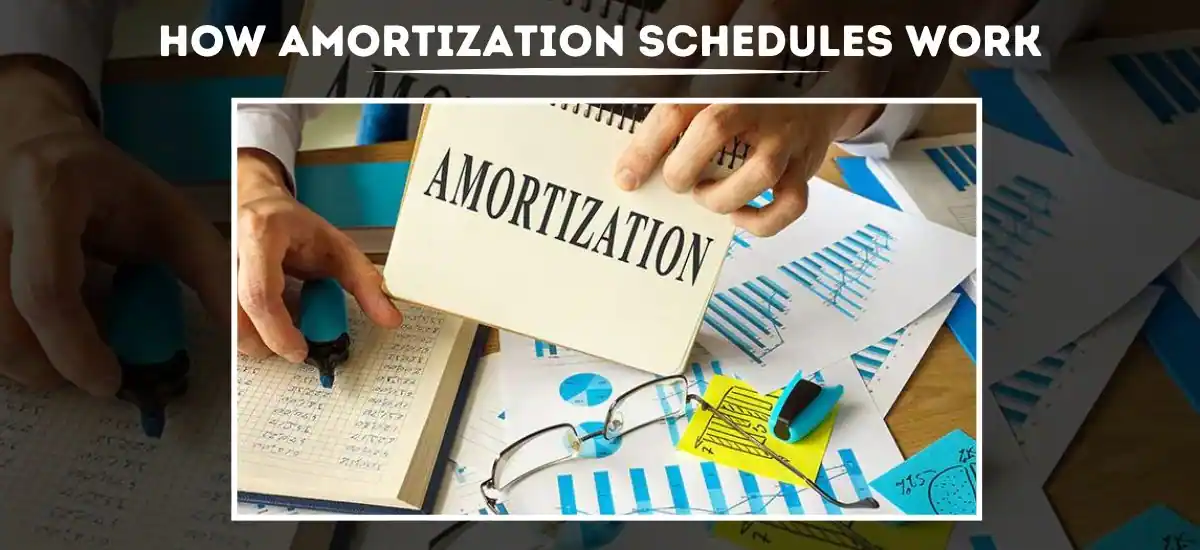When diving into the world of loans—be it for a dream home or a shiny new car—the term ‘amortization’ often pops up. This financial concept isn’t just a piece of jargon but a roadmap that shows how you’ll pay off your loan over time. Understanding amortization schedules can turn the daunting task of managing debt into a clear-cut plan, ensuring you’re in the driver’s seat of your financial journey.
Understanding Amortization: The Basics
At its core, amortization is the process of spreading out a loan into a series of fixed payments over time. Think of it as slicing your loan into manageable monthly pieces. Each payment covers part of the interest costs and part of the principal amount owed, making it a dual-purpose tool. The magic of amortization lies in its ability to help you see exactly when you’ll be debt-free.
Components of an Amortization Schedule
Breaking Down the Essentials
An amortization schedule provides a detailed look at what happens with each payment on your loan. Here’s what it typically includes:
- Principal: This part of your payment goes directly towards reducing the loan amount you initially borrowed.
- Interest: This is the cost you pay for borrowing money. Initially, a larger portion of your payment goes towards interest, but this amount decreases over the life of the loan as the principal amount reduces.
- Total Payment: The sum of the principal and interest. This remains constant if you have a fixed-rate loan.
- Remaining Balance: Shows how much you still owe after each payment. Watching this number decrease can be incredibly satisfying!
Creating an Amortization Schedule
Step-by-Step Guide to Visualizing Your Loan Repayment
Creating an amortization schedule doesn’t require you to be a math whiz; it’s about understanding the process and maybe using a little help from technology. Here’s how you can create one:
- Identify the Loan Amount: This is the total amount you’ve borrowed.
- Determine the Interest Rate: This is the annual rate charged on your loan.
- Set the Loan Term: This is the duration over which you will repay the loan.
- Monthly Payment Calculation: Use the formula or an online calculator to find out how much you will pay each month.
- Break Down Each Payment: For each month, calculate how much goes toward interest and how much toward the principal.
Many online calculators and financial software can automate this for you, displaying a complete schedule that updates as you enter the specifics of your loan.
Benefits of Understanding Your Amortization Schedule

Empowering Your Financial Decisions
Knowing your amortization schedule can be incredibly empowering. Here’s why it’s beneficial:
- Budgeting Made Simple: With a clear schedule, you know exactly how much you need to set aside each month, making it easier to budget without surprises.
- Interest Savings: Understanding how your payments are split between principal and interest can motivate you to make extra payments, thus reducing the total interest paid over the life of the loan.
- Long-Term Planning: Seeing the decrease in debt over time helps you plan for future financial moves, like investing or purchasing additional assets.
This insight not only helps you manage your current finances but also aids in making informed decisions about future investments and expenditures.
Common Types of Amortizing Loans
Exploring Various Applications
Amortization isn’t just for one type of loan; it’s a versatile mechanism used in various financing scenarios:
- Home Mortgages: Probably the most familiar type of amortizing loan, where homeowners gradually pay down their debt over 15 to 30 years.
- Auto Loans: These loans are typically amortized over a shorter period, usually 2 to 7 years, allowing borrowers to own their vehicle outright at the end of the term.
- Personal Loans: Whether for home improvement, debt consolidation, or other personal needs, these loans also follow an amortization model, helping individuals manage repayment in predictable installments.
Amortization vs. Balloon Payments
Choosing Between Gradual Payments and Big Finishes
Understanding the difference between amortization and balloon payments can significantly impact your financial strategy. Here’s a quick comparison:
- Amortized Loans: These loans spread the cost evenly over the life of the loan. Each payment includes interest and principal, gradually reducing your debt until it’s completely paid off.
- Balloon Payments: Unlike amortized loans, balloon payment loans involve making smaller payments during the loan term, followed by a large, lump-sum payment at the end. This can be useful for those expecting a substantial financial windfall in the future but poses higher financial risk.
Deciding between these two options depends on your financial stability and future income expectations. While amortization offers a more conservative and predictable path, balloon payments can provide flexibility if managed wisely.
Case Studies: Real-Life Examples of Amortization Schedules
Learning from Others’ Experiences
To bring the concept of amortization closer to home, consider these real-life examples:
- The First-Time Homebuyer: John and Sarah purchased their first home with a 30-year fixed-rate mortgage. Their amortization schedule helped them plan for home improvements by showing when their monthly payments would decrease as interest charges dropped.
- The Entrepreneur: Melissa took out a personal loan to start her business, choosing a five-year amortized loan. She used her amortization schedule to budget her startup costs and align them with her business’s revenue projections.
- The Car Buyer: Alex bought a new car with a five-year auto loan. By understanding his amortization schedule, he planned extra payments in the first two years to reduce interest costs significantly.
These examples illustrate how different types of loans can be managed effectively with the help of a well-understood amortization schedule.
Frequently Asked Questions
Q1. Can I save money by paying off my loan early?
Ans: Yes, making additional payments towards the principal can reduce the total amount of interest you pay and shorten the loan term.
Q2. How does refinancing affect my amortization schedule?
Ans: Refinancing can change your monthly payment amount and the total interest paid, depending on the new terms. It essentially resets your amortization schedule based on the new loan conditions.
Q3. What happens if I miss a payment on an amortized loan?
Ans: Missing a payment can lead to penalties and affect your credit score. It also changes the schedule, as future payments will need to cover the missed interest and principal.
Conclusion
Understanding amortization schedules empowers you to take control of your financial obligations, whether for personal or business purposes. By grasping this concept, you can plan better for the future, make informed decisions about additional payments, and manage potential risks effectively.


